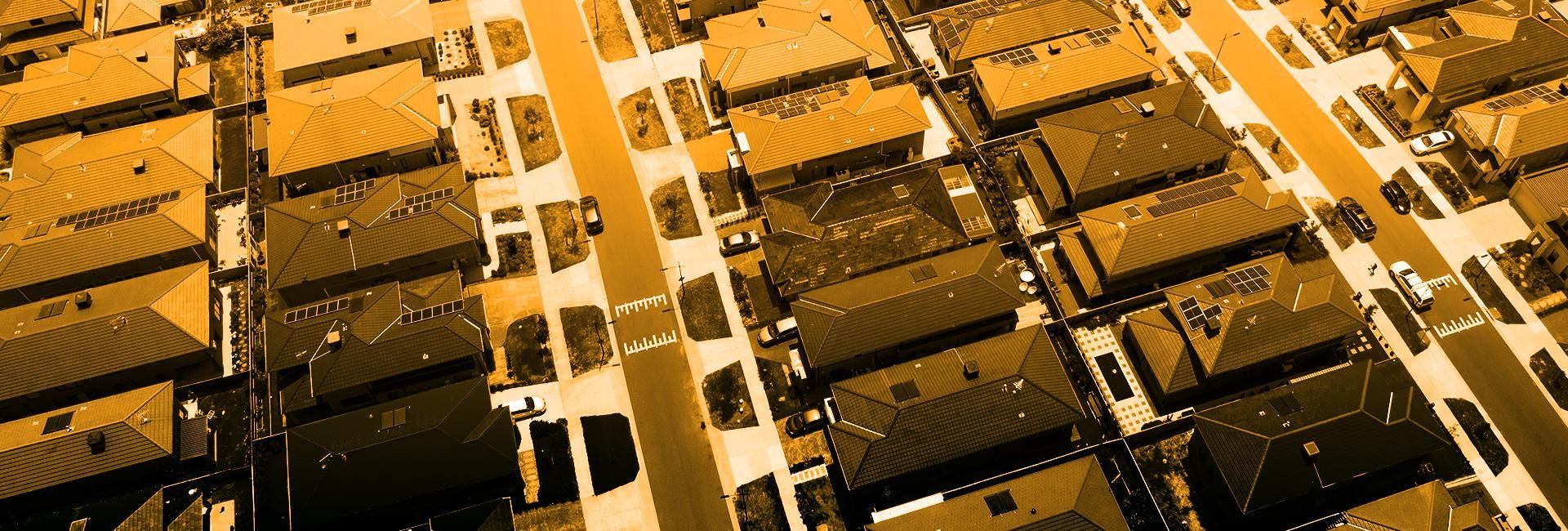The first instalment in Sweltering cities, our five-part series on how rising global temperatures will impact daily living and working conditions — and what needs to change.
Extreme heat is a killer and preparation is key to limiting its impact. Regulating the temperatures in Australian homes will play a major role in how well we can adapt to rising global temperatures, according to Emma Bacon, founder of Sweltering Cities.
In the recent northern summer, Europe suffered through what meteorologists dubbed a “heat apocalypse”, with record-breaking heatwaves wreaking havoc across the continent. Hundreds died of heat exhaustion and tens of thousands more fled their homes to escape the wildfires decimating more than 650,000 hectares of land in Spain, Portugal, France, Italy and beyond.
For Australians, it was a reminder of the devastating 2019-20 Black Summer fires but also a warning for how we need to future fit our homes to deal with a hotter world. Bacon fears some of our most vulnerable Australians, living in rental accommodation, will be left behind.
“The houses being built today are going to define how many people die,” Bacon said, warning that Australia’s competitive housing market could lead to inequality in terms of which Australians could afford to access heat infrastructure. In 2020, she founded Sweltering Cities, a not-for profit organisation, with a goal to "work directly with communities in our hottest suburbs to campaign and advocate for more liveable, equitable and sustainable cities".
'I don't know how I'll manage as I get older ... There doesn't really seem to be any solutions for people on low incomes and no one seems to care to address it.'
Bacon believes renters will be particularly at risk as temperatures rise because in Australia, there are no minimum standards to ensure the homes are safe during summer. The Sweltering Cities 2022 Summer Survey shows only 15 per cent of renters who request alterations to their properties see improvements.
John Gilmovich, president of the Property Owners Association of NSW (POANSW), saw it differently, citing costs of improvements as the biggest factor for landlords baulking at tenants’ requests for improvements.
“When the tenants take a premises on a lease, they take it on an ‘as seen basis’,” Gilmovich said. “They are paying the original contract rent but suddenly expect the landlord to install a cooling heating system say in a three-bedroom house equivalent to a cost of say $10,000.”
In these circumstances, Gilmovich said most landlords would be unwilling to make the improvement because it would take years to recoup the investment. Also, as 48 per cent of renters experience some form of debt, it is unlikely the tenant would agree to a rent increase to subsidise it.
"It feels hopeless asking for insulation because the owners haven’t spent any money on the house to make it liveable. Landlords don’t think about what it would be like to live in an uninsulated house with a tin roof with no air con that gets hit with hot afternoon sun. I don’t think they could live through a summer in this place," one renter in Queensland told the Sweltering Cities Summer Survey 2022.
Eighty-five per cent of participants in this year’s survey believed governments should be responsible for legislating minimum standards on temperature regulation in properties, suggesting governments’ might mandate installation of adequate insulation, ceiling fans, double-glazed windows and light-coloured roofs.
While this may provide a solution for future dwellings, it fails to resolve how these changes can be implemented for existing homes. James Ruben, vice-president of POANSW, argues the issue is far more complex than landlords not empathising with their tenants’ situations. “The sector is effectively a cottage industry,” he said. “Investors don’t tend to design and build investment properties themselves, and often buy existing housing stock.”
In this sense, he believes all property owners, regardless of whether they lease or owner-occupy, face the same challenges when funding home improvements. “Residential rental income often provides a poor cashflow investment,” he said. “Capital growth in house prices may on the surface seem to provide a pool of capital, but the reality is that often this is not easily accessible.
“By creating more and more requirements, it chips away at the variety of rental accommodation that is available,” Ruben said.
With Australian rent already rising at the fastest rate in 14 years, implementing these changes could have catastrophic economic consequences for all parties. Both Gilmovich and Ruben thought the most appropriate time to introduce legislative regulations would be during the design and construction stages.
“Most businesses will do what they are incentivised to do, and the most appropriate response would be to incentivise clever thermally efficient design,” said Ruben. “This could be achieved through floor space bonuses for developers for thermally efficient buildings, tax incentives for thermally efficient designs, and other schemes.”
He suggested similar programs to initiate change in existing properties, such as providing interest-free loan schemes to retrofit thermally efficient building design elements and streamlining access to capital.
One NSW public housing tenant told the survey: "I think that there should be minimum standards for creating housing with natural cooling methods because climate change has caused this warming effect and I don't know how I'll manage as I get older as it's already very difficult right now. There doesn't really seem to be any solutions for people on low incomes and no one seems to care to address it."
Bacon says temperature regulation in all Australian homes is a collective issue which needed a whole of society solution. “The individualisation of the problem puts the burden on the people with the least resources,” she said. “If there’s a collective issue, there’s got to be collective solutions.”






As a checkout chick, I'm used to rudeness. But I can't bear the threats and violence